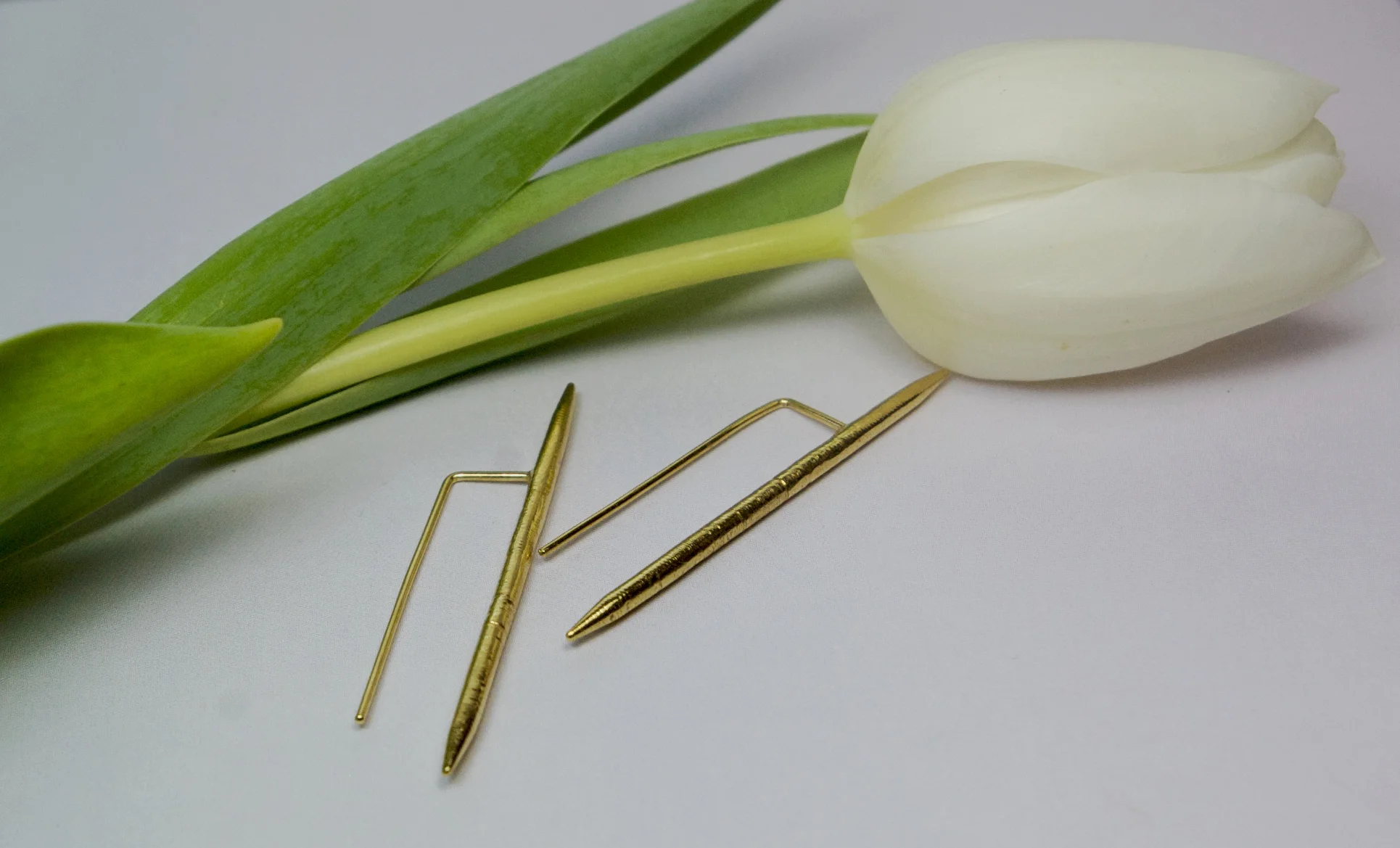If you've ever wondered what the difference between gold plated, gold vermeil, gold filled, or solid gold jewellery.
It’s all too easy to get swept up in the confusion surrounding jewelry materials, gold in particular. The frustration of buying a piece of jewelry, only to wear it a few times and find that it’s turned your skin green is something we all know well, but we knew a solution existed. One of our core values as a company is quality—we want to make sure that there is longevity in your INNER ISLAND pieces so you can enjoy them for years to come.
Gold Vermeil
Gold vermeil jewelry is the highest standard when it comes to gold plated jewellery. It is in the same family as gold plated jewellery because it uses a similar process in which the base metal is dipped into a bath of electroplating solution. The difference is that it is dipped for a longer period of time, creating a thicker layer of gold plating. The base metal, which is sterling silver, needs to have at least 2.5 microns of gold plating thickness in order to classify as gold vermeil. Jewellery that is listed as being plated with gold vermeil should hold its plating for years if the wearer takes proper care of that piece. All INNER ISLAND pieces are gold vermeil.
Gold Plated
The major difference between gold plated jewellery and gold vermeil jewellery is that the former tends to refer to a process that uses a thinner layer of gold. Industry standards for gold vermeil is a minimum of 2.5 microns thickness of gold; gold plated jewellery is identified by anything less than this. Due to the lower micron thickness of gold, gold plated jewelry tends to be less expensive than gold vermeil, and have a somewhat shorter lifespan. When something is gold plated, its gold content is usually less than 1%. This means that the piece is a base metal (often brass) that takes a quick dip in a gold bath–hence the plating. While plated pieces may possess the same luster and gold appearance at first, this layer is often quick to fade when washed, rinsed, or rubbed too hard, leaving behind discolored skin and dirty looking jewelry. Most fashion jewellery is gold-plated, which allows the cost to be as low as possible.
Gold Filled
Similar to gold plating, gold filled jewelry is also made of a different base metal. The difference here lies in the process. In filled jewelry, the gold is melted onto the base metal through a mechanical process. By law, gold filled jewellery must contain 5% gold by weight to be categorized as such, which means the gold coating is generally much thicker than that of plated jewellery. Because of this, the inside of a gold filled jewellery piece will still be stamped with a karat number, however, it is important to note that this is only for the filled coating. While filled jewelry will maintain its gold cast for longer, it will inevitably undergo discoloration and tarnishing after time.
Solid Gold
In its most pure form (24k) gold is is soft, almost orange in color, scratches easily, and is altogether too weak to work with. Because of this, alloys are added to create a more structurally sound metal. Using solid gold ensures that pieces won’t tarnish or fade over time, even with washing and everyday wear. All INNER ISLAND pieces are available to order in solid gold just email us the item and we will get back to you with a price and production time. .
If you're trying to determine whether plated, vermeil, filled, or solid gold are right for you, consider whether or not you're looking for a fine jewellery piece or a piece of semi-fine jewellery that is a bit more fashion forward and easier on your wallet.

